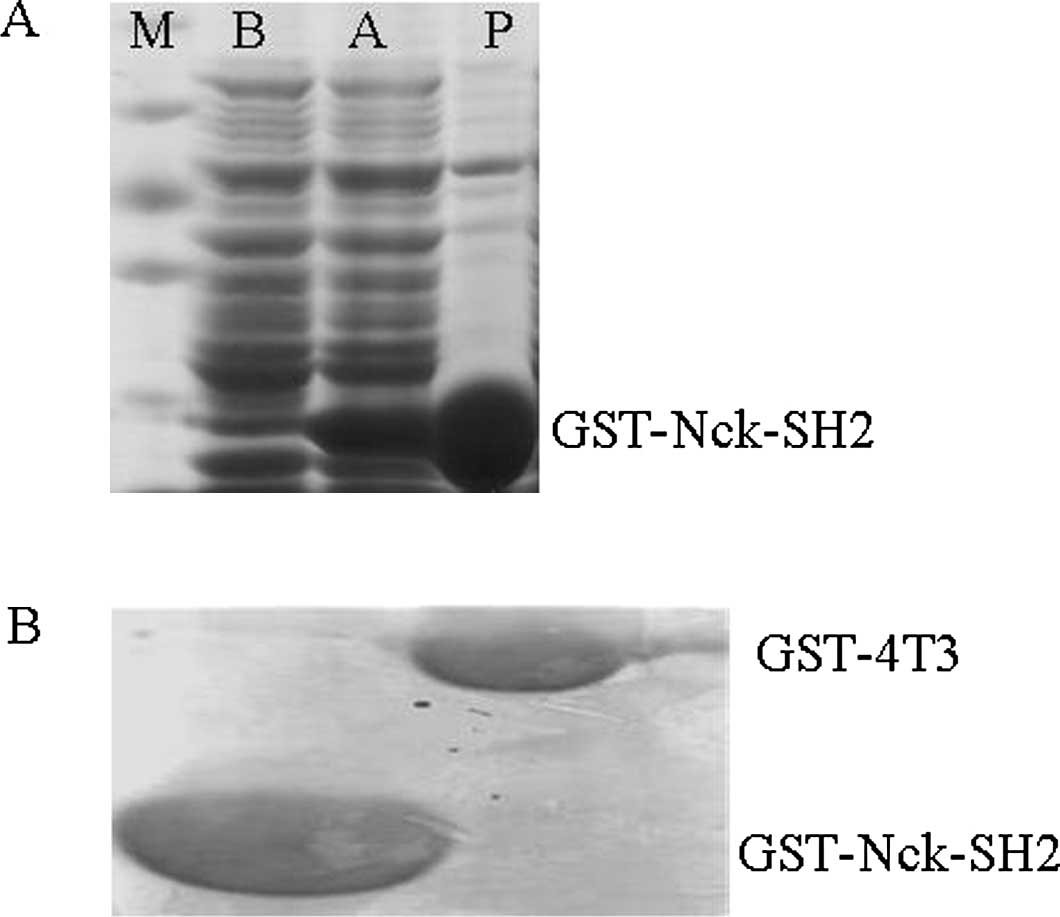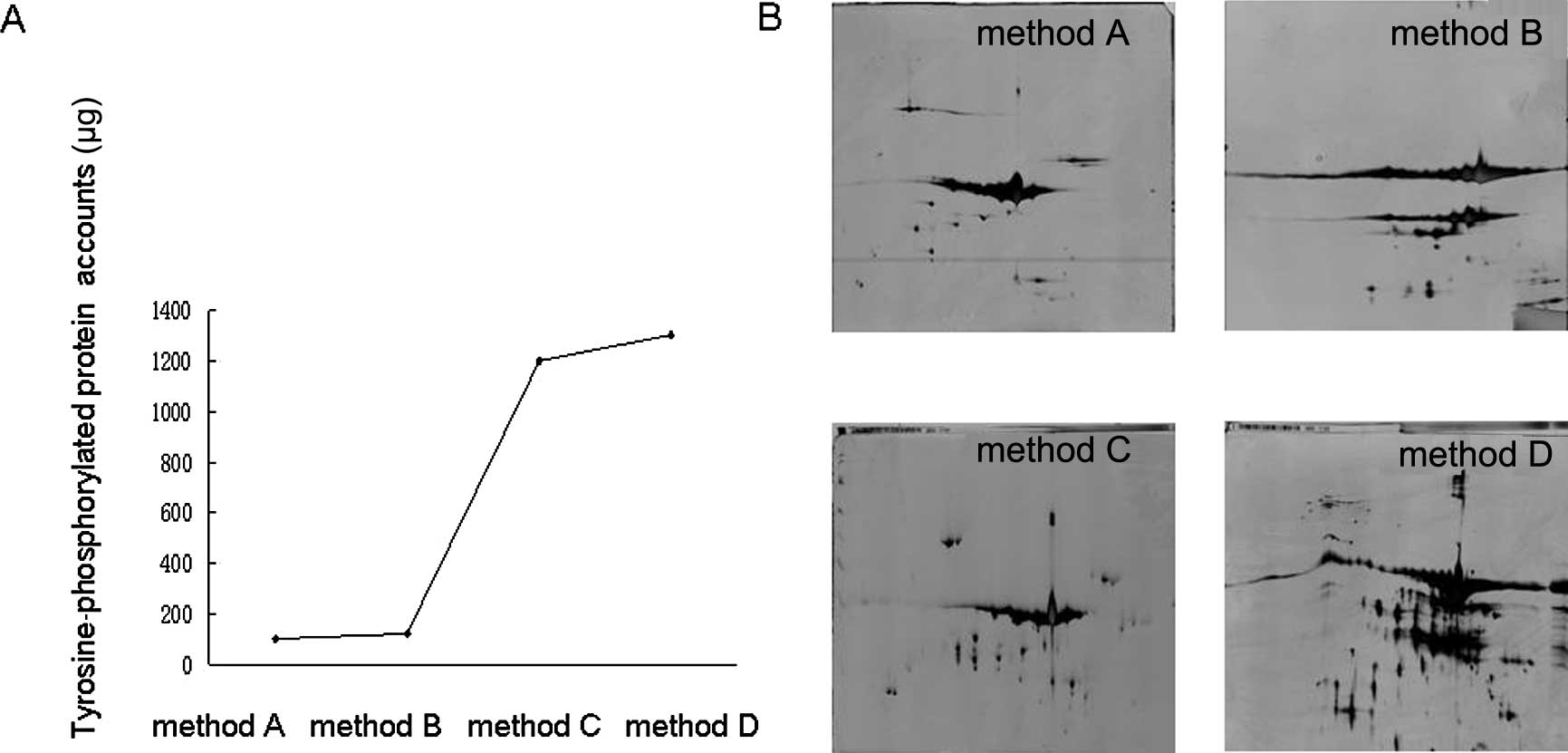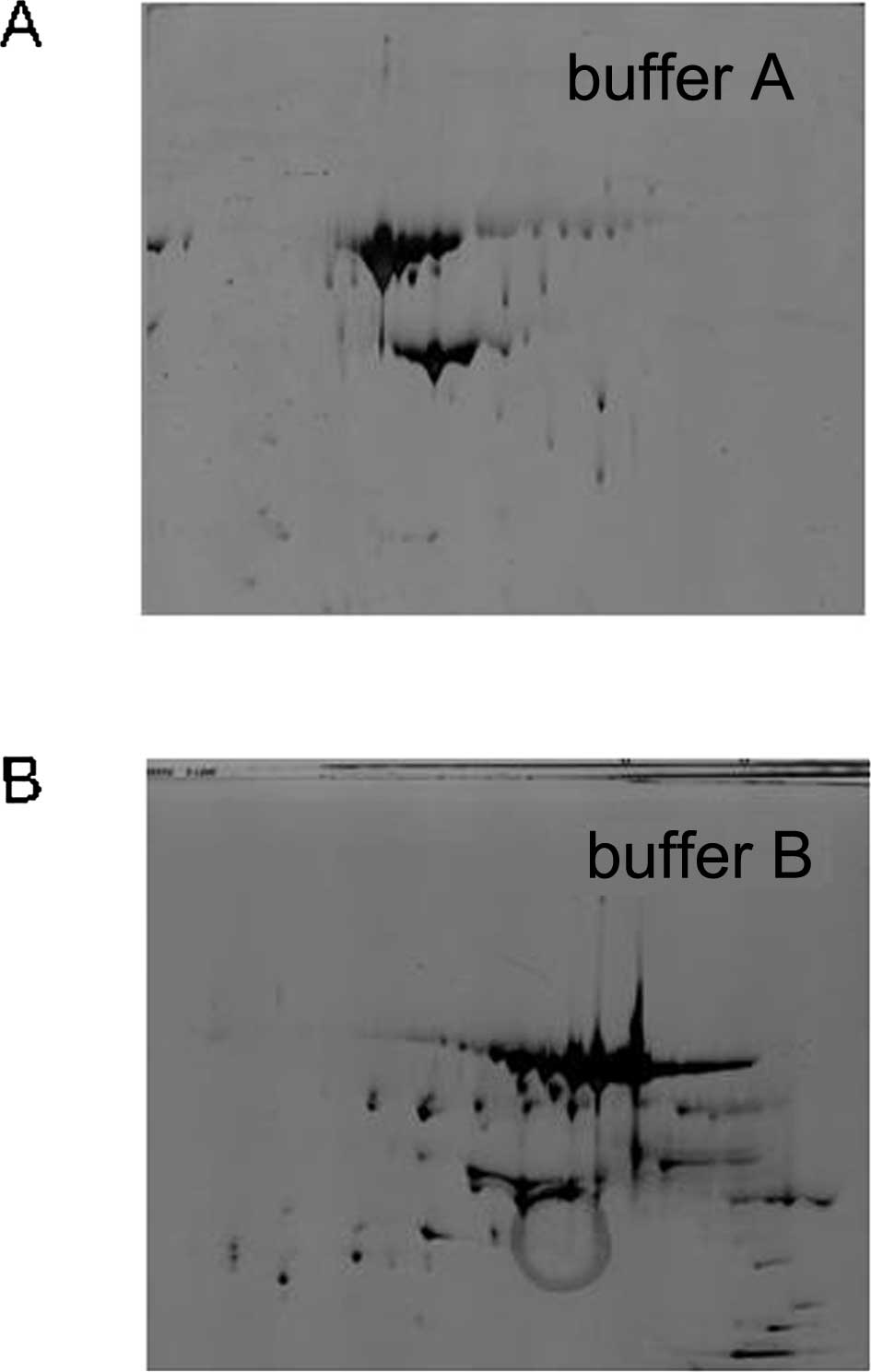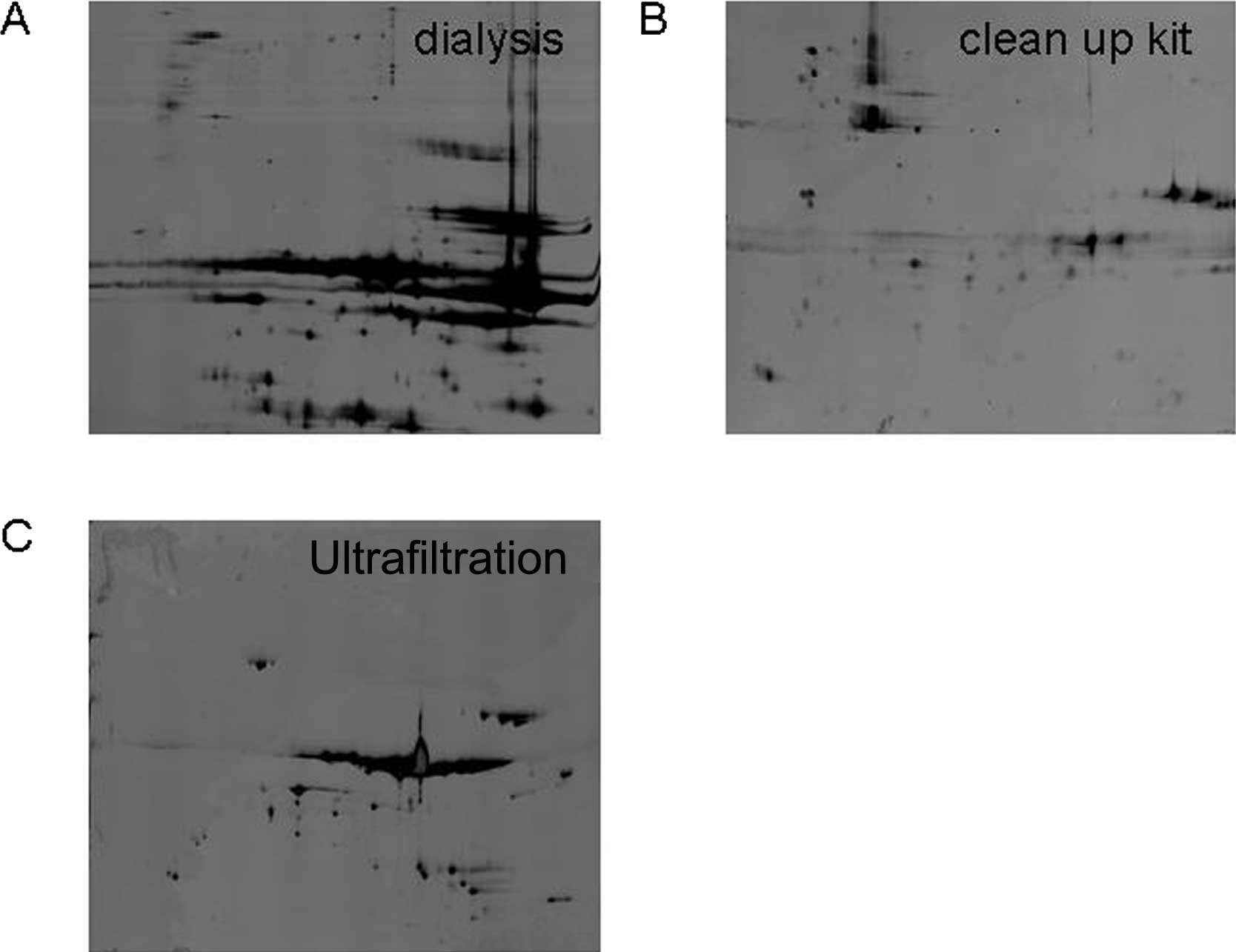|
1
|
Barr AJ: Protein tyrosine phosphatases as
drug targets: strategies and challenges of inhibitor development.
Future Med Chem. 2:1563–1576. 2010. View Article : Google Scholar : PubMed/NCBI
|
|
2
|
Soderblom EJ, Philipp M, Thompson JW,
Caron MG and Moseley MA: Quantitative label-free phosphoproteomics
strategy for multifaceted experimental designs. Anal Chem.
83:3758–3764. 2011. View Article : Google Scholar : PubMed/NCBI
|
|
3
|
Morishita A, Gong J, Nomura T, Yoshida H,
Izuishi K, Suzuki Y, Kushida Y, Haba R, D’Armiento J and Masaki T:
The use of protein array to identify targetable receptor tyrosine
kinases for treatment of human colon cancer. Int J Oncol.
37:829–835. 2010. View Article : Google Scholar : PubMed/NCBI
|
|
4
|
Alcolea MP, Kleiner O and Cutillas PR:
Increased confidence in large-scale phosphoproteomics data by
complementary mass spectrometric techniques and matching of
phosphopeptide data sets. J Proteome Res. 8:3808–3815. 2009.
View Article : Google Scholar : PubMed/NCBI
|
|
5
|
Kuban-Jankowska A, Gorska M, Debicki A,
Popowska U, Knap N and Wozniak M: Protein tyrosine phosphatases -
endogenous markers of oxidative stress. Postepy Biochem.
56:269–273. 2010.(In Polish).
|
|
6
|
Machida K, Mayer BJ and Nollau P:
Profiling the global tyrosine phosphorylation state. Mol Cell
Proteomics. 2:215–233. 2003.
|
|
7
|
Blagoev B, Kratchmarova I, Ong SE, Nielsen
M, Foster LJ and Mann M: A proteomics strategy to elucidate
functional protein-protein interactions applied to EGF signaling.
Nat Biotechnol. 21:315–318. 2003. View
Article : Google Scholar : PubMed/NCBI
|
|
8
|
Bladt F, Aippersbach E, Gelkop S, Strasser
GA, Nash P, Tafuri A, Gertler FB and Pawson T: The murine Nck
SH2/SH3 adaptors are important for the development of
mesoderm-derived embryonic structures and for regulating the
cellular actin network. Mol Cell Biol. 23:4586–4597. 2003.
View Article : Google Scholar : PubMed/NCBI
|
|
9
|
Dierck K, Machida K, Voigt A, Thimm J,
Horstmann M, Fiedler W, Mayer BJ and Nollau P: Quantitative
multiplexed profiling of cellular signaling networks using
phosphotyrosine-specific DNA-tagged SH2 domains. Nat Methods.
3:737–744. 2006. View
Article : Google Scholar : PubMed/NCBI
|
|
10
|
Shen SL, Qiu FH, Dayarathna TK, Wu J,
Kuang M, Li SS, Peng BG and Nie J: Identification of Dermcidin as a
novel binding protein of Nck1 and characterization of its role in
promoting cell migration. Biochim Biophys Acta. 1812:703–710. 2011.
View Article : Google Scholar : PubMed/NCBI
|
|
11
|
Machida K, Thompson CM, Dierck K, et al:
High-throughput phosphotyrosine profiling using SH2 domains. Mol
Cell. 26:899–915. 2007. View Article : Google Scholar : PubMed/NCBI
|
|
12
|
Blume-Jensen P and Hunter T: Oncogenic
kinase signalling. Nature. 411:355–365. 2001. View Article : Google Scholar : PubMed/NCBI
|
|
13
|
Machida K, Eschrich S, Li J, Bai Y, Koomen
J, Mayer BJ and Haura EB: Characterizing tyrosine phosphorylation
signaling in lung cancer using SH2 profiling. PLoS One.
5:e134702010. View Article : Google Scholar : PubMed/NCBI
|
|
14
|
Kudo M and Okanoue T; Japan Society of
Hepatology. Management of hepatocellular carcinoma in Japan:
consensus-based clinical practice manual proposed by the Japan
Society of Hepatology. Oncology. 72(Suppl 1): 2–15. 2007.
View Article : Google Scholar : PubMed/NCBI
|
|
15
|
Kikuchi T and Carbone DP: Proteomics
analysis in lung cancer: challenges and opportunities. Respirology.
12:22–28. 2007. View Article : Google Scholar : PubMed/NCBI
|
|
16
|
Wu Y, Zhou J, Zhang X, Zheng X, Jiang X,
Shi L, Yin W and Wang J: Optimized sample preparation for
two-dimensional gel electrophoresis of soluble proteins from
chicken bursa of Fabricius. Proteome Sci. 7:382009. View Article : Google Scholar : PubMed/NCBI
|
|
17
|
Liu B, Qiu FH, Voss C, Xu Y, Zhao MZ, Wu
YX, Nie J and Wang ZL: Evaluation of three high abundance protein
depletion kits for umbilical cord serum proteomics. Proteome Sci.
9:242011. View Article : Google Scholar : PubMed/NCBI
|
















